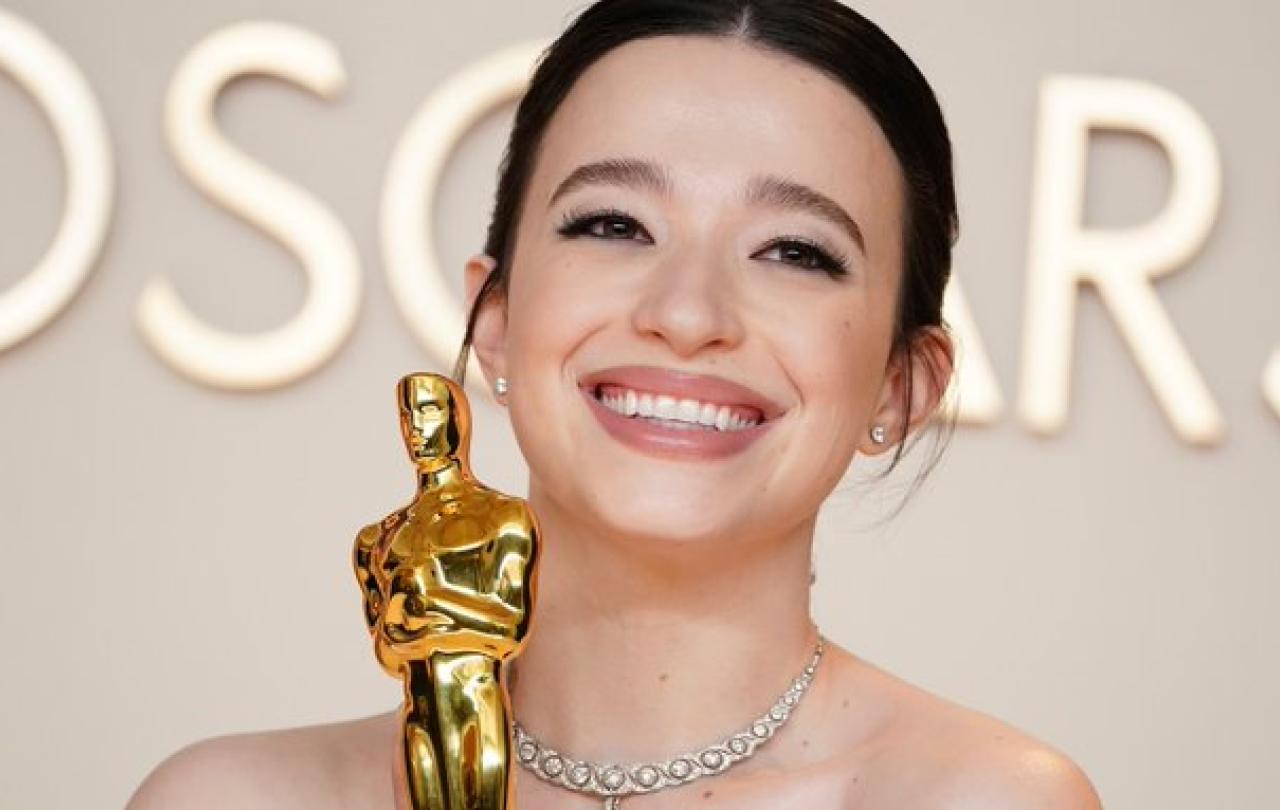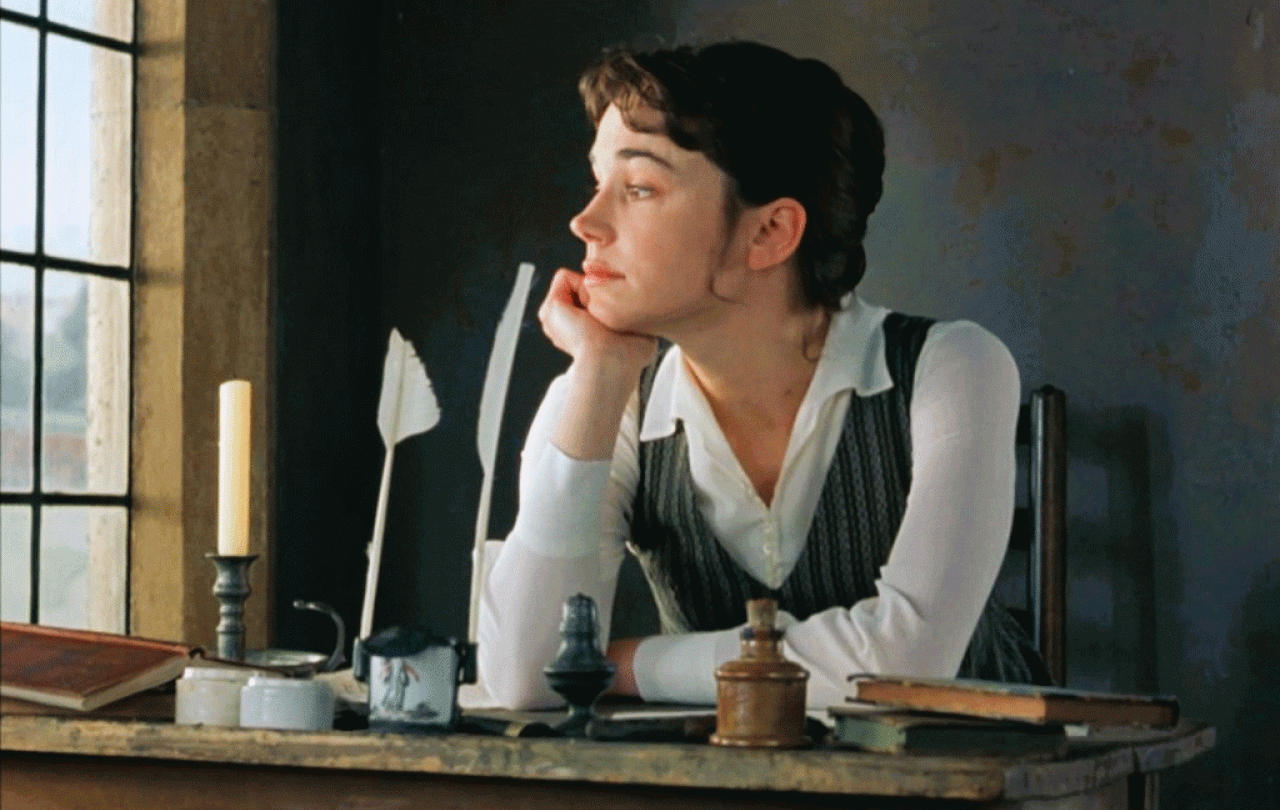
I’m becoming more and more resolute in my belief that nothing is ever trivial.
Not really.
Not when you look at it for long enough, not when you offer it the gift of your curiosity, not when you’re convinced that culture is made up of a myriad of restless hearts.
This resolute belief is the reason I tend to give the Oscars my attention. My full, non-judgmental, attention.
The Academy Awards may seem trivial, especially this year. Especially this week, even. I mean, are we really going to talk about Timothée Chalamet’s yellow suit or Demi Moore’s gracious-loser-face when pockets of our world are being torn to shreds? I get it. Even the people in the eye of the showbiz-storm (mostly) get it. In his opening monologue, this year’s host, Conan O’Brien, called the ceremony a ‘seemingly absurd ritual’.
And it is.
But we are story-telling creatures. We are, to quote Charles Taylor, ‘Storied Selves’. Story is how we wrestle with what has been, what is, and what we think/fear/hope may be. And so, I want to know what stories we’re telling: what stories have we deemed worthy of excavation? What stories are drawing us in and sending us out again with slightly tweaked perspectives? What are we celebrating? What are we lamenting? What are we trying to change? What are we trying to hold on to?
Plus, I’m religious – who am I to assume there’s no meaning behind ‘seemingly absurd ritual’, aye?
The Oscars is an event dedicated to just a handful of the stories that have been told over the past year – the ones that are being told the loudest, I guess. That makes it a sample pool of our collective heart-cries, the tip of our meaning-making iceberg, the headline that sits atop our cultural moment.
Is it somewhat superficial? In part.
Is it a little sanctimonious? Oh, heck yes.
Is it opulent to the point of discomfort? Most definitely.
Is it meaningless? Absolutely not. Storytelling never is.
So, in that vein – what are the stories that were celebrated at last night’s 97th Academy Awards? And what do they teach us about... well… us? I noticed a couple of interesting themes.
In so many ways, movies are humans telling humans what it means to be human.
Firstly, the ceremony opened with a tribute to The City of Angels, herself. The most sparkly city there is, the home of Hollywood – Los Angeles. Terrifyingly large swathes of which were, of course, razed to the ground by historic wildfires earlier this year. Borrowing a line from The Wizard of Oz, ‘there’s no place like home’ was spoken over a montage of the city acting as a backdrop for so many iconic movie scenes.
It made me think of the role that ‘home’ plays in many of the movies that were platformed last night – and I realised, it plays a leading role. ‘Home’, in itself, is a character. There’s the omnipresence of Brighton Beach, New York, in Anora (by far, the big winner of the night), Mexico in Emilia Perez and, of course, ‘Oz’ in Wicked. These films aren’t just set in these locations, they’re utterly dependant on them.
Then there’s the more complicated stories of ‘home’ – stories of home being both here and there. The Brutalist, for example (for which Adrien Brody won the ‘best actor in a leading role’ award), tells the story of a Hungarian-Jewish Holocaust survivor trying to make a new home for himself in the United States. Or A Real Pain, in which Jesse Eisenberg (who also wrote and directed the film) and Kieran Culkin (winner of ‘best supporting actor’) travel to Poland to honour their late grandmother, and therefore, their own lineage. In both movies, ‘home’ is a stranger that the characters must introduce themselves to and befriend.
It's fascinating.
In art, as in life, home provides identity. It’s the geography that we’re made of, the history that runs through our blood, the place where our circumstances become our meaning. At least, that’s what these movies tell us.
Another, more obvious, theme I noticed was that so many of the movies on display were telling notably complex stories of a female experience.
The Substance, one of the most interesting films of this year, tackles the theme of aging. Age-a-phobia, you could say. The experience that countless women have of becoming less valuable as they move through life – the feeling that you’re vanishing from society’s sight with every change of your body. Or there’s the afore-mentioned Anora. I’ll be honest, this one took me by surprise, racking up the most awards of the night, including ‘best picture’. Its story centres upon ‘Ani’, a young Russian American sex worker who weaves in and out of powerful ranks. Wicked, the story of a drastically misunderstood, commonly marginalised and terribly manipulated woman (who just so happens to be a witch). And winner of ‘best international picture’, I’m Still Here, tells the true story of Eunice Paiva. Her husband, Rubens Paiva, is abducted by military operatives in 1971 and never returned. Eunice is left to care for their five children as she seeks justice for her husband as well as indigenous people in the Amazon.
Female experiences – in all their complexity, nuance, grit, strength, and truth – truly took centre stage.
Movies are humans telling humans what it means to be human. And I just love that we do that. I’m never not fascinated by how much we all share – how the particular can tap into the universal. We have so much to learn about each other, and movies are a way we seek to do that, but one of the things that we constantly have to learn, re-learn, and learn again is how much we have in common.
And I know that a sentence like that sounds face-palmingly glib. But if it weren’t true, if we weren’t – at some deep and true level – made by the same stuff and for the same stuff, I’m not sure movies would exist. I’m not sure that they could exist.
And so, all of this to say that there’s more to the Oscars than meets the eye – even when what meets the eye makes it roll. Give it the gift of your curiosity, it’s worthy of it. I promise.
Join with us - Behind the Seen
Seen & Unseen is free for everyone and is made possible through the generosity of our amazing community of supporters.
If you’re enjoying Seen & Unseen, would you consider making a gift towards our work?
Alongside other benefits (book discounts etc.), you’ll receive an extra fortnightly email from me sharing what I’m reading and my reflections on the ideas that are shaping our times.
Graham Tomlin
Editor-in-Chief





